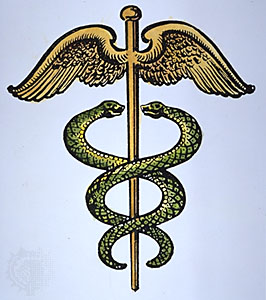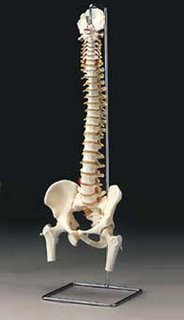 The contrast between these two screw-ups couldn’t be more striking. In one hospital, a patient dies in an emergency room and the staff tries to cover up the depth of their negligence by doctoring her medical records. And in the other, wrong site surgery results in an apology to the patient, an email to the entire staff and a blog posting to the world.
The contrast between these two screw-ups couldn’t be more striking. In one hospital, a patient dies in an emergency room and the staff tries to cover up the depth of their negligence by doctoring her medical records. And in the other, wrong site surgery results in an apology to the patient, an email to the entire staff and a blog posting to the world.
I covered the first case last week, when a woman was videotaped in the emergency room of Kings County Hospital collapsing and dying while being ignored for an hour. Half an hour after she collapsed, and while the security camera recorded her on the ground, some genius wrote in her medical chart that she was “awake, up and about” and had just used the restroom.
And now we have the polar opposite, courtesy of Paul Levy, the President and CEO of Beth Israel Deaconess Medical Center in Boston at his blog Running A Hospital. Mr. Levy lays out the circumstances of what happened. While he leaves out the details that might identify the patient, he spares nothing in the analysis of how the hospital reacted.
The hospital sent out a detailed memo to the staff last Thursday about the incident, which was subsequently picked up by White Coat Notes, the Boston Globe’s medical blog. The memo details how the surgeon was “distracted by thoughts of how best to approach the case” on a hectic day and operated on the wrong side of the body.
The original memo was blunt:
This week at BIDMC, a patient was harmed when something happened that never should happen: A procedure was performed on the wrong body part. With the support of all our Chiefs of service, we are sharing this information with the whole organization because there are lessons here for all of us.
As we all know, the cover-up is almost always worse than the initial incident. Any student of political scandals knows that. But the same holds true in the field of medical malpractice. The notes in the chart that cover-up the malpractice tend to infuriate juries. A forthcoming acknowledgement of a mistake and an apology would not be treated the same way.
So what does Mr. Levy want to do now? Check this out:
While we explore lots of ideas, one already in my mind and that of this Board member would be to make a video with the actual people — doctors, nurses, surgical techs — who were in the OR at the time to explain what they saw and felt and what they learned from the experience. While they might be in too much distress to do this right now, they might agree over time, and their doing so would create a powerful message at every orientation, at nurses and departmental meetings, and conferences. Of course, if the patient would agree to participate, that would lend even more power to the story.
This type of conduct is simply unheard of from my view in the medical malpractice world. I’ve taken testimony from hundreds of doctors. Exactly one has acknowledged that he made a mistake. Mr. Levy seems hell bent here to destroy the White Coat of Silence that exists widely through the medical community. (See also: How Medical Malpractice Gets Covered Up)
If more hospitals and doctors acknowledged mistakes and sought to learn from them — as Beth Israel Deaconess is doing — it would probably go a long way to putting medical malpractice attorneys out of business. And the reason is really quite simple, and human. Worse than being injured by negligence is adding insult to the injury by covering it up. It is anger that most often causes potential litigants to call medical malpractice attorneys. And that is why many medical practitioners are being encouraged to say they are sorry when such mistakes occur. (Addendum, see also, Why Patients Call Lawyers)
There are some folks that will never learn and will continue to cover up. But there are some folks, like Paul Levy, that seemed determined to make that type of conduct a thing of the past.
See also:
- Surgeon operates on patient’s wrong side (Medical Quack)
- Beth Israel medical teams to take more time outs (Universal Hub)
Updated with more links (and a ton of comments at the original source):
- The Right Lessons From Wrong-Site Surgery (A Healthy Blog)
- A Lesson From Tom (Follow-up to the original post at Running a Hospital)


